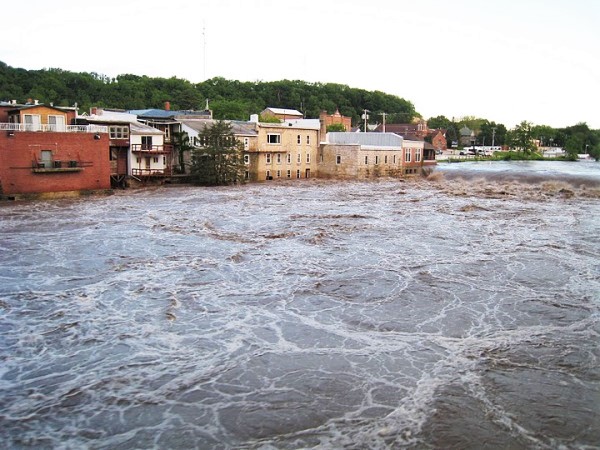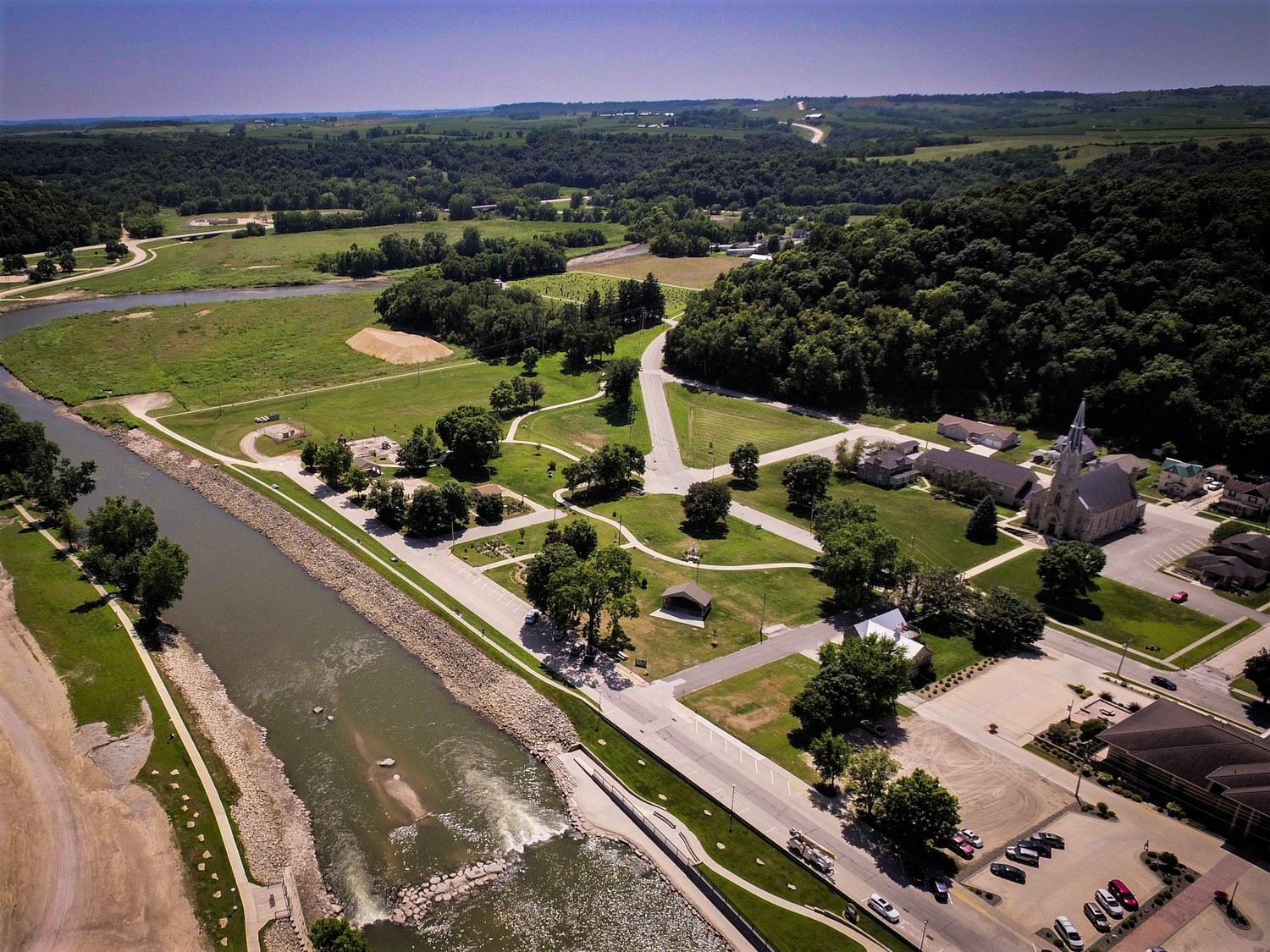In 2008, the Turkey River surged over its banks and into Elkader’s Main Street, flooding downtown businesses and homes. In a unique collaborative effort in 2009, the City began working with a group of landscape architecture students from Iowa State University to explore new recreational opportunities for the riverfront area.

In February of 2010, the City selected a team led by MSA to help evaluate in greater detail possible improvements to the river and riverfront, including improved access to the river, dam modification or repair, whitewater recreation, new riverwalk segments, pedestrian bridges, and a Turkey River Visitor Center.
The project featured a vast public involvement campaign and conceptual planning and design efforts that evaluated tourism interests, flooding concerns and economic impacts for the revitalization of the community’s riverfront property. MSA led Elkader leadership through the concept design phase, including detailed project and estimates and support for grant funding efforts.
In 2011, the City asked MSA to lead a more detailed planning and design effort for a major redevelopment of the south edge of downtown as a multi-use park that would serve both river-based and land-based recreation opportunities. After conducting research and assessing options, the partners recognized an opportunity to reuse portions of the 2008 FEMA flood buyout area, implementing a new shared-use trail, soccer field and playground equipment in 2013.

Additionally, in the spring of 2014, Elkader celebrated the grand opening of Founders’ Park, a new 11-acre space offering recreational trails, gardens, playground equipment, shelters and a thrilling whitewater feature with kayak course that has since gained national recognition.
MSA assisted the community with a variety of riverfront implementation efforts, including the expansion of shoreline access and viewing areas along the Turkey river. MSA also provided engineering services for the park’s whitewater attraction, in partnership with an outside firm who completed water feature design. The result is an exciting whitewater course with three distinct features: The Gobbler Wave, a 22-foot-wide wave which is popular for front and side surfing options, a High-Flow Wave Structure Boulder Island, which at a higher cfs, provides a big water experience to challenging more advanced whitewater paddlers, and Fish/Canoe Passage, designed to allow fish to pass upstream and canoes to pass downstream—a favorite spot for kayakers at both ends of the learning spectrum.
